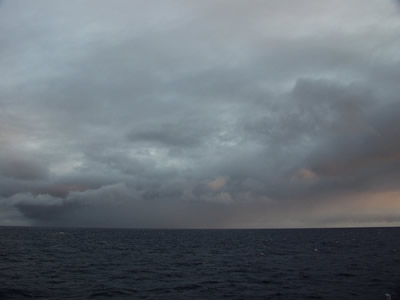Stratocumulus clouds and light drizzle over the ocean in the Southeast Pacific.
Click on image for full size
Image Courtesy of Kimberly Comstock/University of Washington
Clouds and Precipitation in the Southeast Pacific
The Southeast Pacific region contains the world's largest set of stratocumulus clouds. These clouds extend for almost 2,000 kilometers (1,243 miles) off the west coast of South America from central Chile to the equator. They form on aerosols that are produced naturally and by human activity along the coast.
The Southeast Pacific doesn't receive much precipitation. Drizzle tends to fall in the early morning and a lot of it evaporates before reaching the Earth's surface. Further off the coast of South America, the clouds tend to produce more drizzle. These clouds also contain areas of broken clouds called "pockets of open cells" (POCs).
Scientists participating in the VOCALS field campaign will be exploring the interactions between clouds, precipitation, the ocean, and the land in order to learn more about these processes. In particular, it seems that POCs and drizzle might play an important role in how clouds impact climate.
You might also be interested in:
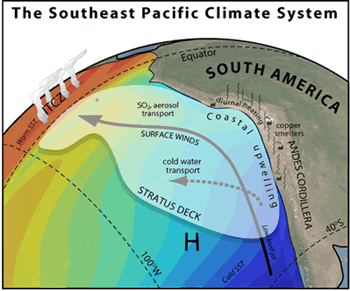
There are a lot of clouds over the Southeast Pacific Ocean off the coasts of Peru and Chile in South America. In fact, this area has the largest amount of stratus and stratocumulus clouds in the world!
...more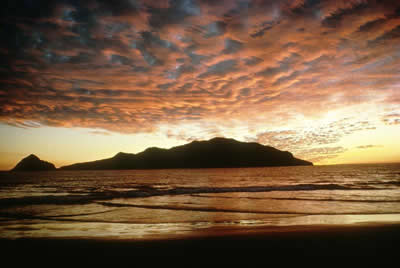
Stratocumulus clouds belong to the Low Cloud group. These clouds are low, lumpy, and gray. These clouds can look like cells under a microscope - sometimes they line up in rows and other times they spread
...more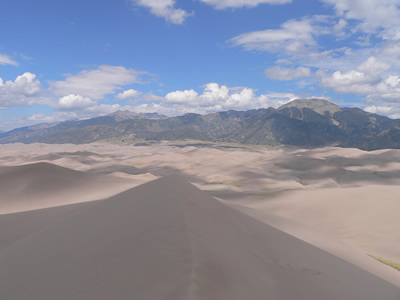
A cloud is composed of tiny water droplets or ice crystals. A series of things have to happen in order for these water droplets or ice crystals to form into clouds in the atmosphere, and different types
...more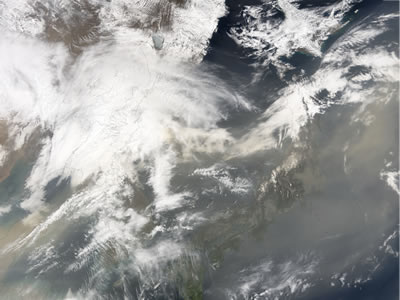
In order for clouds to form, water droplets in the atmosphere need a surface to condense upon. There are millions of tiny particles floating in the air that can provide this surface, and these particles
...more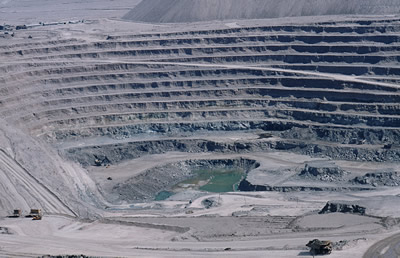
Mining and fishing are very important activities to the people who live in Chile and Peru. Do you think these activities could be connected to the climate in this area? Scientists in the VOCALS field experiment
...more
Drizzle is very light rain; the water drops that make up drizzle are smaller than rain drops. Drizzle can be so light that only a millimeter of water falls to the Earth's surface in one day. It is produced
...more
Have you ever left a glass of water out for a long time? Did you notice that the water disappears after a few days? That's because it evaporated! Evaporation is when water passes from a liquid to a gas.
...more


